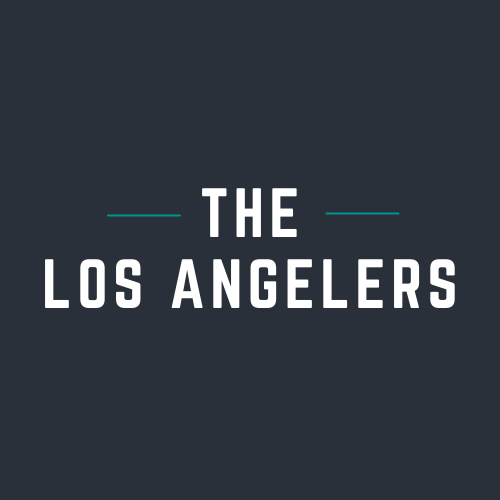Introduction to Imagefal
In the evolving landscape of digital technology, Imagefal emerges as an advanced cloud-based platform designed to efficiently manage images. As a cutting-edge solution, it aims to streamline the workflow for various professionals such as photographers, graphic designers, and marketers. With the proliferation of digital content and the escalating need for effective image organization, Imagefal addresses a vital gap in digital image management systems.
The primary purpose of Imagefal is to facilitate seamless storage, retrieval, and sharing of visual content. In an era characterized by high volumes of image production, professionals often find themselves overwhelmed by the sheer quantity of files. Imagefal simplifies this process by integrating powerful features that allow for categorizing, tagging, and easily accessing images based on user-defined criteria. By reducing the time spent searching for specific visuals, users can focus on creativity and strategic tasks that truly matter.
Targeting diverse segments of the creative industry, Imagefal stands out by catering not only to individual photographers and designers but also to marketing teams and agencies that rely on high-quality images for branding campaigns. The platform’s intuitive user interface ensures that even those with minimal technical expertise can navigate and utilize its capabilities effectively. Furthermore, as the demand for rapid content creation grows, Imagefal enhances collaboration among teams, allowing multiple users to access and work on shared projects in real time.
In conclusion, Imagefal fulfills a critical need within the digital age by providing an advanced, user-friendly solution for image management. As professionals seek efficient ways to handle their increasing image workloads, Imagefal stands out as a reliable ally in navigating the complexities of digital content management.
Key Features of Imagefal
Imagefal emerges as a powerful tool in digital image management, offering a range of features designed to enhance the user’s experience. At the forefront are the advanced image creation tools, which allow users to generate high-quality visuals from scratch or utilize templates tailored to various needs. These tools cater to both novices and professionals, enabling anyone to produce stunning images efficiently. This versatility is particularly beneficial for businesses seeking to create marketing materials, social media posts, or any other visual content quickly.
Edit functionalities are another hallmark of Imagefal. Users can easily modify images with a comprehensive suite of editing tools. These include options for cropping, resizing, adjusting colors, and applying filters. Such features not only make it intuitive to enhance images but also provide immense creativity opportunities for users. The seamless editing process enhances workflow by eliminating the need to switch between different applications, allowing for a more streamlined approach to image management.
Moreover, Imagefal excels in offering cloud storage capabilities, providing users with a secure and accessible space for their projects. This empowers individuals and teams to store images safely while also facilitating easy sharing and collaboration. With cloud storage, images are available from any internet-enabled device, ensuring that work is never hampered by geographical constraints.
An essential component of Imagefal’s functionality is its ability to integrate with other software. This interoperability allows users to connect their existing tools and platforms with Imagefal, creating a more cohesive workflow. For instance, designers can directly import images into their favorite graphic design software, thereby minimizing the time spent managing files across different applications. Overall, these key features culminate in a robust digital image management solution that significantly enhances productivity.
Benefits of Using Imagefal
Imagefal offers a myriad of benefits tailored to enhance the experience of digital image management for individuals and teams alike. One of the most significant advantages is the substantial time savings it provides. With a user-friendly interface and streamlined processes, users can quickly upload, organize, and retrieve images without getting bogged down by unnecessary complexities. This efficiency allows teams to focus more on their core activities, ultimately increasing productivity across various projects.
Collaboration among team members is notably improved with Imagefal’s integrated tools. Teams can easily share images, provide feedback, and work together in real-time, regardless of geographical boundaries. This remote collaborative space transforms how creative and marketing departments operate, breaking down silos that previously hindered project progress. Such connectivity fosters a culture of innovation and collective input that is essential in today’s fast-paced work environment.
Accessibility is another cornerstone of Imagefal’s appeal, primarily attributed to its cloud storage capabilities. Users can access their image libraries from virtually anywhere, whether they are in the office, at home, or on the go. This flexibility ensures that creative professionals are not constrained by location, enabling them to work efficiently irrespective of their circumstances. In the current landscape of digital marketing and design, this level of accessibility is crucial for maintaining a competitive edge.
Furthermore, Imagefal aligns seamlessly with the evolving demands of modern digital marketing strategies. Its features cater to the need for quick turnaround times and effective asset management, thereby equipping marketers and designers with the tools they need to stay ahead. The capacity to swiftly adapt to changing trends and customer expectations is indispensable in today’s digital ecosystem. Overall, adopting Imagefal can greatly transform the way teams manage visual assets, enhancing collaboration and workflow efficiency.
Comparing Imagefal to Other Platforms
In the rapidly evolving landscape of digital image management, distinct platforms cater to varying needs, yet Imagefal stands out due to its unique features and competitive advantages. One of the primary aspects to consider in comparing Imagefal to other platforms is pricing. Many traditional digital image management systems often involve significant upfront costs or subscription fees that can accumulate over time. In contrast, Imagefal adopts a more flexible pricing model, providing affordable tiers that align with the user’s requirements, thereby making it accessible for both individual users and larger organizations.
Usability is another critical factor where Imagefal excels. While numerous digital image management platforms can present a steep learning curve, Imagefal prioritizes user experience with its intuitive interface. This user-centered design approach simplifies navigation, enabling users to effectively manage their image libraries without needing extensive technical expertise. Many competitors still rely on outdated user interfaces, potentially deterring less tech-savvy users and impacting productivity.
Specific features highlight Imagefal’s distinct offerings compared to other platforms. For instance, Imagefal integrates advanced AI-driven image tagging and searching capabilities, allowing users to quickly locate images through sophisticated filtering options. This is a significant upgrade over platforms that rely solely on manual tagging. Additionally, Imagefal offers robust collaboration tools, such as real-time image sharing and comments, which facilitate teamwork and streamline communication, often lacking in other services.
In conclusion, when evaluating Imagefal against other digital image management platforms, its competitive pricing, superior usability, and innovative features clearly establish it as a formidable choice for individuals and entities seeking to enhance their image management processes. The unique blend of affordability and functionality makes Imagefal a noteworthy contender in the digital space. As digital image management continues to grow in importance, selecting the right platform is essential, with Imagefal emerging as a leader in this domain.
User Testimonials and Case Studies
Over the years, professionals across various industries have turned to Imagefal to enhance their digital image management capabilities. Numerous testimonials and case studies highlight how this powerful tool has streamlined workflows, improved organization, and fostered collaboration among teams. One such user, a graphic designer from a leading marketing agency, noted, “Imagefal transformed the way we manage our visual assets. Before using Imagefal, locating files was a time-consuming task that hindered productivity.” With Imagefal, the designer experienced a notable decrease in the time spent searching for images, allowing more focus on creativity and project execution.
Another testimonial comes from a photography studio that implemented Imagefal to manage their extensive portfolio. The owner stated, “We utilized Imagefal to categorize our work, making it easily accessible for our clients and team members. The tagging feature enabled us to quickly filter images by genre or event, which significantly improved our client response times.” This case study emphasizes the efficiency Imagefal brings to image organization, ultimately enhancing customer satisfaction and driving repeat business.
A more technical perspective comes from a software developer who integrated Imagefal into their application. The developer reported, “The seamless integration capabilities of Imagefal allowed our team to utilize its image management features without major overhauls to our existing systems. This has simplified our workflow immensely.” This case illustrates the adaptability of Imagefal, catering not only to the creative industries but also to technical fields, enhancing overall productivity.
In conclusion, user testimonials and case studies reveal the impactful role of Imagefal in redefining how digital images are managed. The positive experiences shared by professionals further underscore the tool’s effectiveness in enhancing both workflow efficiency and project outcomes.
Getting Started with Imagefal
Beginning your journey with Imagefal is a straightforward process that paves the way for effective digital image management. The first step is to visit the official Imagefal website. Here, you will find an option to sign up for an account. Simply click on the registration button, and fill in the required fields with your personal details such as your name, email address, and a secure password. After submitting your information, you will receive a confirmation email. Click the link in this email to verify your account and activate your profile.
Once your account is active, you can log in to Imagefal to access your dashboard. The dashboard is designed with user-friendliness in mind, providing a comprehensive view of your image library, recent uploads, and a quick access panel for common tasks. To enhance your engagement with the platform, take some time to explore the essential tools available within Imagefal. Key features include image upload options, organization methods through albums and tags, and various editing tools that allow users to modify their images directly within the application.
Navigating Imagefal is intuitive, but for first-time users, familiarizing yourself with the layout is advisable. Icons and menus are clearly marked. The left-hand sidebar provides access to main features such as the library, uploads, and tools. To maximize your experience, consider utilizing the search function to locate specific images swiftly. Experiment with creating folders and tagging your images to facilitate better organization. As you explore Imagefal’s functionalities, you’ll uncover advanced features like collaborative sharing and cloud integration, which will further enhance your digital image management skills.
Best Practices for Image Management with Imagefal
Effective image management is essential for individuals and organizations striving to streamline their digital workflows. Imagefal offers an array of features that facilitate optimal organization, presentation, and retrieval of images. By adhering to best practices, users can maximize the potential of this innovative platform.
One of the foremost recommendations is to establish a systematic organization of your image library. Creating folders based on categories, such as events, projects, or themes, can greatly enhance accessibility. With Imagefal, users can easily sort and manage images, allowing for a more intuitive navigation experience. Implementing a structured hierarchy will not only save time during searches but also improve collaboration among team members.
Utilizing tagging and metadata is another critical aspect of effective image management. By effectively employing keywords and descriptors, users can make their images more searchable and thus easier to locate. Imagefal allows for the addition of comprehensive metadata, including dates, locations, and subject descriptions. This information plays a crucial role in enhancing discoverability and contextualizing the images, resulting in a more organized workspace.
Additionally, employing editing tools available within Imagefal can significantly enhance the quality of visual content. Basic editing functions like cropping, color correction, and resizing can be performed directly within the platform. This capability not only streamlines the editing process but also reduces the need for external software, making image management even more efficient.
Lastly, regular maintenance of the image library is vital for preserving a clutter-free environment. Scheduling periodic reviews of existing images to remove duplicates or outdated content can keep your collection relevant and manageable. By implementing these best practices with Imagefal, users can ensure a more organized, efficient, and visually appealing image repository.
Future Developments and Updates
The digital landscape is constantly evolving, and Imagefal is poised to stay at the forefront of these advancements. Upcoming developments within the platform are guided by user feedback and an understanding of emerging technology trends. Users can anticipate several promising features aimed at enhancing the overall experience.
One significant area of focus is the integration of artificial intelligence (AI) into Imagefal’s functionality. AI-based algorithms are being developed to assist with image organization and tagging, making it easier for users to locate and manage their digital assets. Advanced search capabilities will allow users to find specific images based on visual content rather than only metadata, providing a more intuitive and efficient experience.
Additionally, ongoing improvements will be implemented in the user interface of Imagefal. A more streamlined and user-friendly design is being crafted, ensuring that all features are easily accessible. This not only simplifies navigation but also enhances the overall user experience by making it more engaging and less time-consuming. Feedback from current users has emphasized the need for continuous refinement, and Imagefal is dedicated to responding to these insights.
As cloud technology continues to advance, Imagefal plans to adapt by increasing storage options and enhancing security measures. This includes the introduction of end-to-end encryption to protect users’ images and sensitive data from unauthorized access. Regular updates will ensure that security features remain robust and up-to-date with the latest standards.
In conclusion, the future developments of Imagefal promise to enhance digital image management significantly. With a strong commitment to user experience and technological advancements, Imagefal is set to revolutionize how individuals and businesses interact with their digital images, ensuring they remain efficient and secure in the fast-paced digital world.
Conclusion
In this era of rapid technological advancement, effective digital image management has become a quintessential element for individuals as well as businesses. The introduction and integration of Imagefal into this domain has revolutionized how users organize, store, and retrieve images. Through its intuitive interface and robust features, Imagefal not only simplifies tasks but also enhances overall productivity. Users can effortlessly manage their vast collections, ensuring that images are always accessible when needed.
Moreover, Imagefal’s commitment to high-quality metadata management ensures that each image is easily categorizable and retrievable, aligning with the growing demand for efficiency in digital workflows. As professionals increasingly rely on visuals, the significance of comprehensive image management solutions like Imagefal cannot be overstated. This platform empowers content creators, marketers, and any professionals dealing with images to maximize their creative potential while minimizing the time spent on administrative tasks.
As competition rises in the digital landscape, utilizing Imagefal can provide users with a substantial advantage. It not only fosters the ease of access but also encourages collaborative efforts through shared libraries and asset management features. Therefore, individuals and organizations looking to enhance their image organization strategies should consider incorporating Imagefal into their operations. By leveraging the platform’s capabilities, users can ensure their digital assets are not only well-managed but also optimally utilized. In summary, Imagefal stands out as a leading solution in digital image management, urging all interested parties to explore its features and realize the benefits it has to offer.







